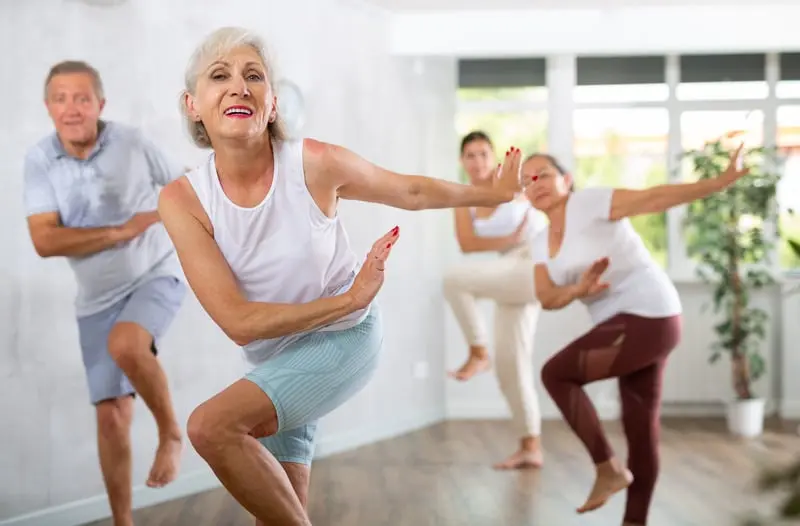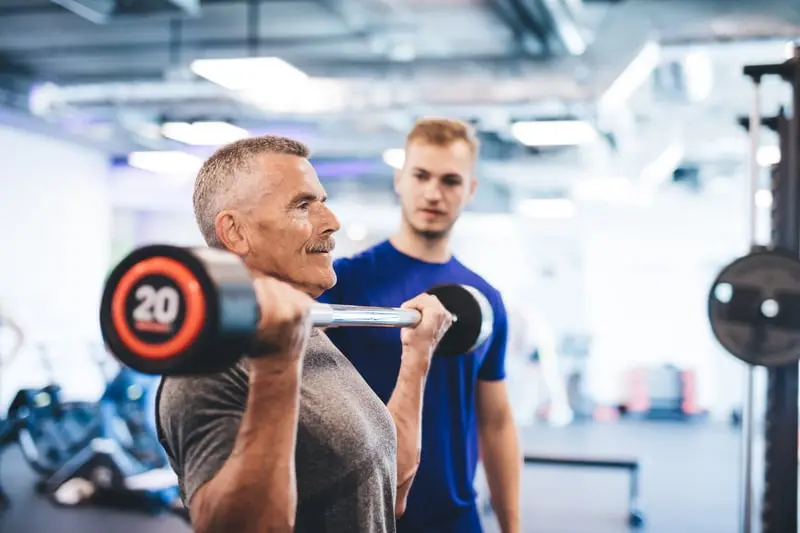
Navigate and Thrive with Parkinson’s
From work and lifestyle to home safety and family conversations, you’ll find resources and expert insights to guide you through the next steps with confidence.
Step Into Action
Let’s start at the very beginning, a very good place to start. Browse the categories below for resources recommended by the wider PD community.
Step One: Health & Mindset
Resources to help you understand Parkinson’s, support your emotional well-being, and cultivate a strong, positive mindset at any stage of your journey.
5 Misconceptions about Living with Parkinson’s
Discover the truth behind common myths about Parkinson’s and learn how understanding these misconceptions can empower you to live well with the disease
[Watch] “Good Night” Starts with a Good Day: Getting Your Best Sleep with Parkinson’s
Struggling with sleep and Parkinson’s? This “Ask the MD” video from the Michael J. Fox Foundation shares five practical strategies to help you sleep better and feel more energized throughout the day.
Parkinson’s Swallowing Changes, What an Expert Wants You to Know
Learn how swallowing can change over time and get expert tips to stay safe, comfortable, and confident while eating
Music Therapy and Parkinson’s
Explore how music therapy can boost mobility, communication, and emotional well-being—all through the power of rhythm and sound.
[Watch] Top 10 Questions Answered: Nutrition and Parkinson’s
Get expert answers to the top 10 nutrition questions, helping you make informed choices to support brain health and manage symptoms effectively.
8 Practical Ways to Work on Your Mental Health with Parkinson’s
This article offers eight practical strategies to support mental health, including understanding the psychological impact of Parkinson’s, incorporating exercise, and building a strong support network.
Meditation & Mindfulness Program
Mindfulness and meditation offer powerful tools to manage stress, improve sleep, and enhance emotional well-being, providing individuals with Parkinson’s a holistic approach to living well.
Step Two: Family
Guidance and practical advice for sharing your diagnosis, involving care partners, and creating a safe, supportive home environment for you and your loved ones.
How to Communicate What Parkinson’s Is to Friends and Family
This article from the Davis Phinney Foundation offers practical advice for sharing your Parkinson’s diagnosis with friends and family, emphasizing the importance of open communication, setting boundaries, and providing resources to foster understanding and support.
How to Talk to Your Kids About Parkinson’s
Practical tips for talking to kids about a Parkinson’s diagnosis, focusing on honest, age-appropriate communication and ongoing support for the whole family.
Step Three: Lifestyle
Advice on sharing your journey with friends, staying active, maintaining wellness through exercise and nutrition, and adapting daily routines to manage symptoms and live fully.
Using your day-to-day for a better day with Parkinson’s
Learn how small, daily lifestyle choices—like moving more, eating well, managing stress, and connecting socially—can help you feel better and take control of your health.
What’s the Best Shoe for Parkinson’s?
Discover expert tips on selecting footwear that enhances stability and reduces fall risk, including features like flexible soles, wide bases, and ankle support to improve safety and comfort.
In the Bathroom: Assistive Devices for People with Parkinson’s Disease
Tips on bathroom safety tools—like grab bars and raised toilet seats—to help make daily routines easier and safer.
8 Tips for Traveling with Parkinson’s
Helpful travel tips to stay safe, prepared, and comfortable—from packing meds to navigating airports and hotels with ease.
How to Date When You Have Parkinson’s
This personal essay from the Davis Phinney Foundation shares one woman’s journey of re-entering the dating world after a Parkinson’s diagnosis, offering honest insights on vulnerability, timing, and self-worth.
Step Four: Work & Financial Planning
Guidance on navigating conversations at work, understanding benefits and insurance, planning for long-term financial needs, and adjusting your career path with confidence.
Parkinson’s in the Workplace: Accommodations and Disability
A guide to workplace accommodations, disability rights, and navigating job changes or benefits with confidence.
4 Tips for Balancing Work and Parkinson’s
This article provides practical strategies for managing work life alongside Parkinson’s, including planning for fatigue, prioritizing exercise, optimizing your work environment, and tending to emotional health. These tips aim to help individuals maintain productivity and well-being in the workplace.
Expert Advice on Workplace Issues
Expert tips on handling workplace challenges, accommodations, and communication for those managing Parkinson’s.
Step Five: Health Insights
Access expert guidance and clear explanations to better understand Parkinson’s and your care options. Discover valuable insights on symptoms, treatments, and support programs to stay informed and empowered.
Ask the MD: Advanced Practice Providers and Your Parkinson’s Care
How nurse practitioners and physician assistants support Parkinson’s care alongside doctors.
Step Six: Continuing Education
Expand your knowledge and stay informed with curated book recommendations, podcasts, and workshops about Parkinson’s. Access key resources, major websites, and links to events, lectures, and learning archives to support your ongoing journey. Get a grasp on seminal research and get up-to-date on new trials.
Coming Soon
Coming Soon
Coming Soon
Coming Soon
Step Seven: Tools & Resources
Explore community-recommended apps, devices, and products that aid movement, medication management, and daily living, along with practical checklists and resources to simplify your routine.
PWF Support Group (Coming Soon)
More information coming soon
Step Eight: Community Inspiration
Connect with stories from others who share your journey and find encouragement throu
gh community contributions. Explore support groups, classes, and resources that bring
people together for strength and inspiration.
PWF's Community Contributions: A Space for Your Art to Shine
We’re thrilled to announce our monthly Community Contributions, a new way for you to share your talents with the PWF family and beyond.
PWF's My Story Feature: Sharing the Strength of Our Community
Our “My Story” series will highlight the voices and experiences of individuals living with Parkinson’s. These personal stories, shared in written or video format, will celebrate the resilience and strength of our community.
Step Nine: Y.O.P.D.
Resources, guidance, and community support tailored for younger individuals living with Parkinson’s.
[Watch] Young-onset Parkinson’s Disease
Learn what sets young-onset Parkinson’s apart and discover key tips for managing symptoms and life changes unique to an earlier diagnosis.
Working Full-time with Young Onset Parkinson’s
This article from the Davis Phinney Foundation offers practical strategies for managing a full-time career alongside Young-Onset Parkinson’s Disease (YOPD), including tips on workplace accommodations, energy management, and maintaining a balanced routine.
Parkinson’s 101
We Answer Your Top Parkinson’s Questions
What is Parkinson’s?
Parkinson’s disease is a progressive neurodegenerative disorder characterized by a loss of dopamine producing cells in the brain. It primarily affects older adults with men at a higher risk than females, but is also found in younger adults. Movement is primarily affected and may include symptoms such as tremors, stiffness, slowness of movement and difficulty with gait and balance. Other symptoms vary and may include gastrointestinal symptoms, changes in sense of smell, sleep disturbances, behavior changes, depression, and challenges with cognition.
What is the cause of Parkinson’s?
The exact cause of Parkinson’s disease is still unknown. Researchers believe it is likely due to a combination of genetic and environmental factors. Some people may have a family history of Parkinson’s, but for many, there is no definitive genetic link. Certain environmental exposures, like toxins, might increase the risk, but it’s important to know that Parkinson’s is complex, and no single cause has been identified.
What are the early signs of Parkinson’s?
Diagnosing Parkinson’s involves a careful assessment by a neurologist, often specializing in movement disorders. There isn’t a single test for Parkinson’s; instead, the diagnosis is based on medical history, a review of symptoms and a neurological examination. In some cases, imaging tests may be used to rule out other conditions. Early diagnosis is important so that symptoms can be managed as soon as possible.
What are the stages of Parkinson’s?
Parkinson’s disease is typically divided into five stages, each reflecting the progression of symptoms.
- Stage 1: Mild symptoms on one side of the body that don’t interfere much with daily life, such as a slight tremor or changes in posture.
- Stage 2: Symptoms become more noticeable, with symptoms on both sides of the body, but daily activities can still be managed.
- Stage 3: Balance issues and slower movements appear, increasing the risk of falls. Daily tasks become more challenging.
- Stage 4: Symptoms become more severe, requiring assistance with daily activities. Walking and movement are significantly impaired.
- Stage 5: The most advanced stage, where symptoms are severe, and the person may need full-time care. Mobility is often limited, and a wheelchair may be necessary.
What treatment options are available for Parkinson’s?
While there is no cure for Parkinson’s, there are many treatments available to help manage the disorder. Medications, such as levodopa, can help control symptoms, especially those affecting movement. Physical therapy, occupational therapy and speech therapy are also important for maintaining mobility and function. In some cases, surgical options like deep brain stimulation may be recommended. Staying active, maintaining a healthy diet and staying engaged in activities and in your community make a big difference.
What are some common myths or misconceptions about Parkinson’s?
There are several misconceptions about Parkinson’s disease. One common myth is that the disorder only affects older people, but Parkinson’s can affect adults of any age. Another misconception is that tremors are the only symptom, while in reality, Parkinson’s can also cause stiffness, balance issues, swallowing and voice concerns, and changes in mood and cognition. Lastly, it’s often believed that Parkinson’s is fatal; however, while it’s a serious condition, it’s not usually the direct cause of death. Many people with Parkinson’s live long, fulfilling lives with the right treatment and support.
You Took the First Step—Now It’s Time to Move!
We believe that exercise is one of the most powerful tools for living well with Parkinson’s. As our co-founder shares, “Exercise has proven to be one of the most effective means of slowing the progression of PD. For me, a mix of boxing, core, and balance work has been the most effective—and consistency, five days a week, has made a real difference.” Everyone’s needs are different, and finding the right routine comes down to personal interests, goals, and energy levels.
Explore below to see why exercise helps, what works for you, and how to begin safely.
Benefits of Exercise for PD
Regular exercise is one of the most powerful tools for managing Parkinson’s. Research shows it can improve balance, flexibility, posture, and overall mobility. It can also slow the progression of motor symptoms, reduce stiffness, and help with mood and cognition. Beyond the physical benefits, exercise offers a sense of empowerment and control over your health and well-being.
Finding the Right Exercise Routine
There’s no one-size-fits-all approach. The best routine is one you enjoy and can stick with consistently. Whether it’s boxing, walking, cycling, dancing, strength training, yoga, or cardio-based workouts, variety is key. A balanced mix of aerobic (cardio), strength, flexibility, and balance training is recommended. You can explore programs tailored specifically for Parkinson’s or modify existing classes with guidance from trained instructors.
Starting Exercise Safely
Before beginning any new fitness program, consult with your doctor or a physical therapist familiar with Parkinson’s. Start slow, listen to your body, and focus on proper form over intensity. At the Parkinson’s Wellness Foundation, we offer Parkinson’s-specific classes led by trained professionals who understand your unique needs. Whether you’re trying our signature classes or Dance for PD, our programs are designed to help you move confidently and safely. You don’t have to do it alone—our team is here to support you every step of the way.










